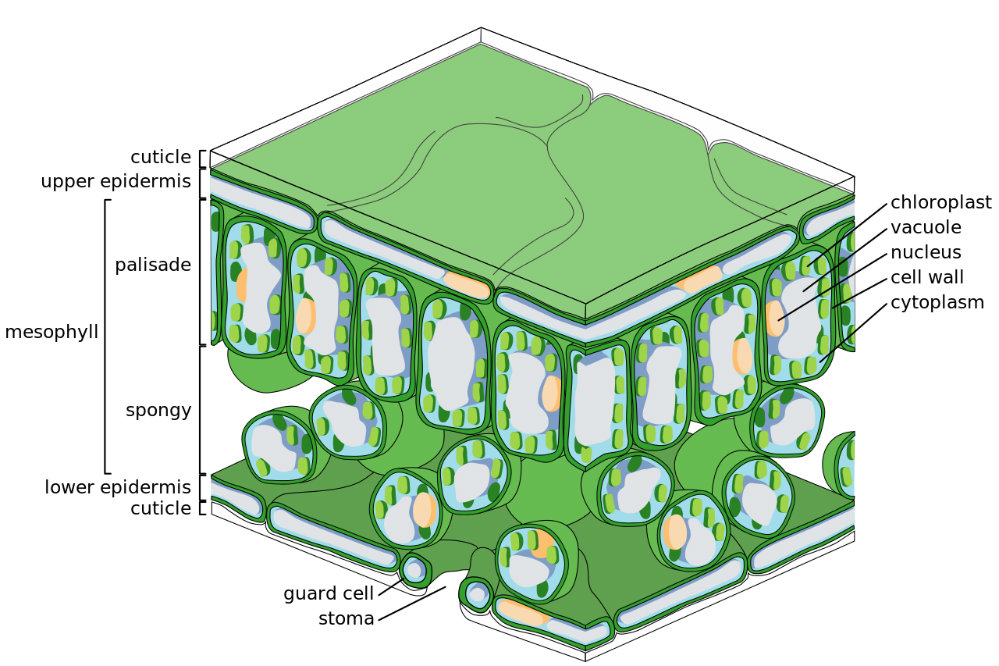Yu Xing Cao - Houttuynia Herb
Parts of Leaves
Leaves have a variety of different parts. See the diagram on the left to identify what each part of the leaf is.
 Cuticle: Is a waxy layer that covers the epidermis. It is impermeable to liquids and water vapor.
Cuticle: Is a waxy layer that covers the epidermis. It is impermeable to liquids and water vapor.
Epidermis: Covers the top and bottom of the leaf. The epidermis has many functions. It guards against water loss, regulates the exchange of gases, secretes metabolic compounds and can sometimes absorb water depending on the type of plant.
Mesophyll Tissue: All the parts inside the leaf. This is where the chloroplasts (chlorenchyma) are found.
Palisade Layer: Contains the Chloroplasts. Chloroplast cells are the engine of the leaf, this is where photosynthesis occurs.
Spongy Layer: The cells in this layer are space further apart from each other. This allows carbon dioxide to diffuse into the leaf and oxygen to diffuse out of the leaf during the photosynthesis process. Leaf veins are also located in the spongy layer. The veins are comprised of two types of vascular tissues - Xylem cells that bring water and minerals from the roots to the leaves and Phloem cells that move sap and sugars produced by photosynthesis out of the leaf.
Stoma: Are pores found in the epidermis. They connect to chambers that art connected the air spaces in the spongy layer.
Guard Cells: Located in the epidermis, control the exchange of gases in and out of the leaf.
© 1stChineseHerbs.com
References
https://en.wikipedia.org/wiki/Leaf , also the image source – found in a search for a image with a free to use license 3/28/2016
http://www.stavacademy.co.uk/mimir/herbsarticle.htm
